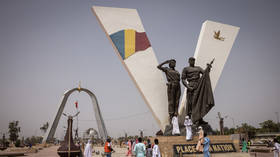How a tiny tourist paradise has become a political flashpoint between India and China

The Maldives is an archipelago nation just south of India. With a population of just half a million people, the islands may seem inconsequential, and the small republic is mostly known as a paradise getaway for tourists.
Despite this, the nation is, in fact, a stage for a political flashpoint between China, India and the West, having recently elected a new president, Mohamed Muizzu, who is actively pro-Beijing and openly antagonistic to New Delhi, so much that Indians are now threatening a tourism boycott of the country. Muizzu has just visited China, where he inked a series of agreements with Xi Jinping, particularly in the area of infrastructure.
Why is the Maldives important? First, the islands are situated in a critical spot of the Indian Ocean, forming a sort of logistical crossroads between the Indian subcontinent, the Arabian peninsula and the Red Sea, Africa, and Australia. This indispensable position is precisely why the islands were part of the British Empire, because whoever has maritime access to the islands can project both commercial and military influence into the Indian Ocean writ large, and into the seas that span from it. Likewise, the location of the Maldives means that it is also a critical variable in India’s own security, especially in its own geopolitical struggle with China.
India’s foreign policy seeks to maintain a localized hegemony over its “backyard” region in what is known as its Neighborhood First policy. Here, it seeks to militarily contain Pakistan while also dominating the smaller states on its periphery, including Sri Lanka, Bangladesh, Nepal and Bhutan, as well as the Maldives. However, a challenge India faces is that all of these states have sought to resist Indian dominance by courting closer relationships with China, leading to a tug of war over the allegiance of the states of South Asia, which plays out in the fields of trade, infrastructure and investment.
This of course plays into the wider dynamic of the West’s “Indo-Pacific strategy,” whereby the US and its allies seek to promote the rise of India as a commercial and military power to try and contain China in the surrounding oceans and prevent a shift in the global balance of power. Naturally, the Maldives is a big part of that equation.
Because of this, New Delhi is wary of Beijing using its relationships with South Asian states – including its incredibly strong military and economic relationship with Pakistan – to effectively contain India. From an Indian perspective, it is surrounded by China (with years-long border disputes ongoing) and Nepal in the north, Pakistan in the west, Bangladesh in the east and Maldives and Sri Lanka off in the Indian Ocean in the south. Because India cannot yet compete penny for penny on offering these countries better investments than China can, it sometimes uses coercive policies to try and block Beijing’s engagement with them, such as denying airspace access to a Chinese-built airport in Nepal.
India espouses, on a national level, the Hindu nationalist ideology Hindutva, which is seen by critics as “discriminating” against minority religions. It has also been growing increasingly pro-Israel. Such politics produce anti-India sentiment on the ground in the smaller regional states, especially Muslim ones, such as the Maldives, which thus only strengthens their resolve to engage with Beijing. Hence, the Maldives has elected a pro-China and anti-India president who openly campaigned on an “India Out” platform.
Does that mean the island nation is taking sides? Not necessarily. Diplomacy is never truly the same as public opinion, and small countries often aim to hedge between rival big powers, in this case India and China, in order to gain maximum benefits. This strategy is how they maintain their autonomy and independence, ultimately recognizing that their geographic position is what makes them valuable for the major powers. Still, being a small nation on India’s periphery, the Maldives faces potential consequences if it becomes too hostile to New Delhi, yet Beijing is attractive as a powerful guarantor against the worst of such consequences.
As much as the Maldives dislikes India, it cannot feasibly afford to ignore or dismiss New Delhi completely, only to balance the equation more towards China. This is more about holding its ground against India’s “neighbourhood” policies than actively disregarding or challenging them. India is experiencing rapid growth, but it will still be some time before it develops the economic, financial and infrastructure capabilities to compete dollar for dollar with China, setting the stage for a protracted competition for influence and allegiance across South Asia.
The statements, views and opinions expressed in this column are solely those of the author and do not necessarily represent those of RT.













